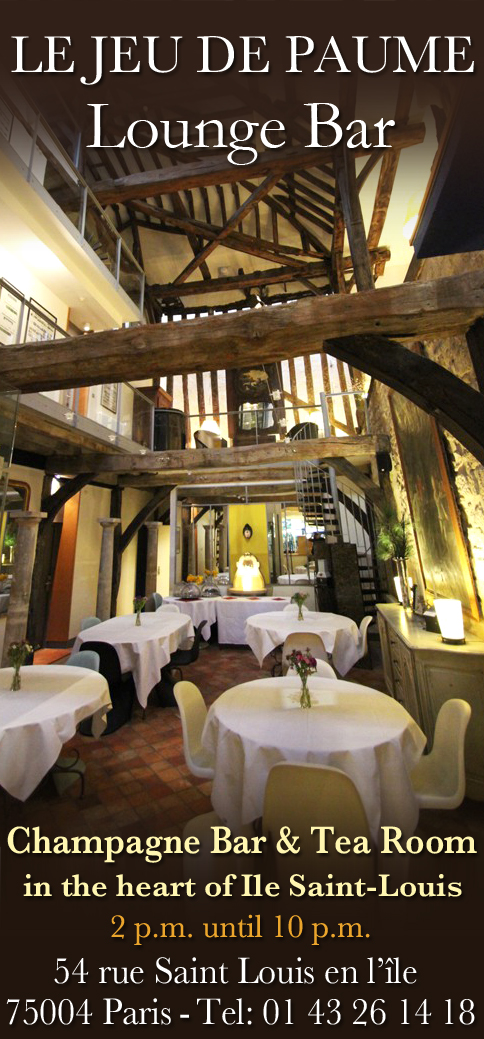 The Knights of the Temple
The Knights of the Temple
The Secrets of the Templars
(1).jpg)
Forget about Reine-le-Château and other such fantaisies - there was nothing mysterious about the Order of the Knights Templar, nor about its treasure. Following is the true story of the mighty Knights, and it was here, on the very soil of the Marais, that much of it was played out.
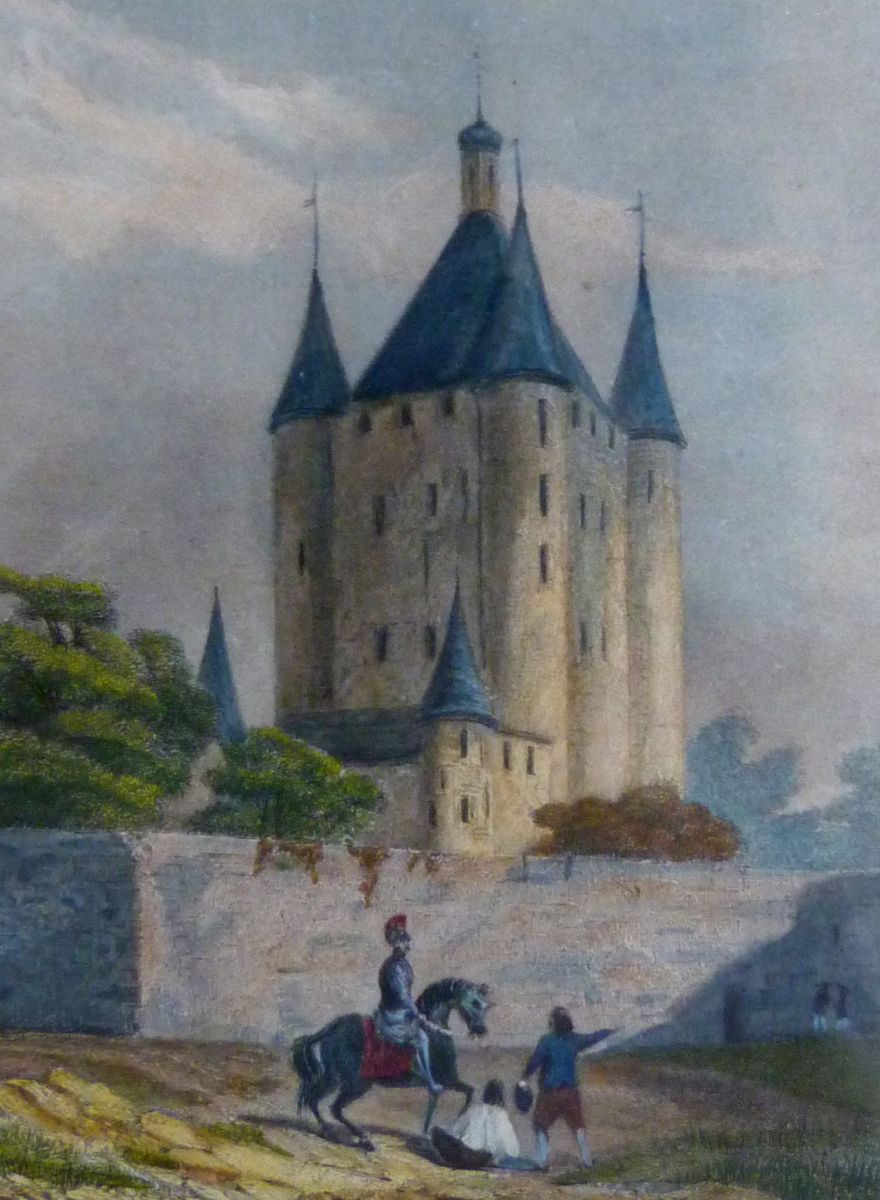 “A few street names are all that is left of the Enclos du Temple, the mighty fortress of the Knights Templar, the founding fathers of the 3rd arrondissement. Initially, they were a fighting order in the Holy Land (1118 AD), set up for the protection of Christian pilgrims from the Muslims. After the collapse of the Christian Kingdom, they retreated to Cyprus and from there spread all over Europe.
“A few street names are all that is left of the Enclos du Temple, the mighty fortress of the Knights Templar, the founding fathers of the 3rd arrondissement. Initially, they were a fighting order in the Holy Land (1118 AD), set up for the protection of Christian pilgrims from the Muslims. After the collapse of the Christian Kingdom, they retreated to Cyprus and from there spread all over Europe.The great wealth they had acquired through gifts bestowed upon them by appreciative Christians enabled them to purchase vast estates and accelerate the process. One such estate was situated on the eastern edge of Paris, close to today's Hôtel de Ville, where a group of them settled in 1139..
To the north east lay stretches of marshland, remnants of the ancient branch of the Seine that had once flowed down from the heights of Belleville, east of Paris. It took the hardy Templars barely a century to turn it into the market garden (marais) of the capital, emulating the monks of Saint Martin des Champs who had dried up the swamps on the western fringe of the future arrondissement a century earlier. Having redeemed the land, they moved to its north-eastern edge, where they built a fortified compound, l'Enclos du Temple, which also served as their European headquarters.
Forget about Reine-le-Château and other such fantaisies - there was nothing mysterious about the Order. Rather, it was their sophisticated farming methods that enabled them to redeem the marshy land of the future Marais, and it was their acute business acumen that incited them to use their geographical dispersion to advantage and develop a kind of international deposit bank which contributed to the continual increase of their wealth. This, and their independence, were jealously kept behind the crenellated walls of the Enclos du Temple, roughly on the site of today's rue du Temple, rue de Bretagne, rue de Picardie and rue Béranger, south of Place de la République. It was complete with watch towers and a drawbridge that led to the Temple' only gate (now corner of rue des Fontaines-du-Temple and rue du Temple)
.jpg)
.jpg)
During a mass rising in 1306, he accepted the Templars' kind offer to shelter him and took the measure of their stupendous wealth. Eaten up with envy, he set out to contrive their downfall by spreading treacherous rumours and slanders against them. After hideous trials, false accusations, humiliations, torture and the burning of 54 Templars on Ile aux Juifs (now the southern edge of Place Dauphine), the French branch of the Order was disbanded in 1313. On 12 March 1314, Jacques de Molay, Grand Master of the Temple, was brought to the stake on l'Ile aux Juifs, where, in the presence of the King, he thundered out prophecies about the King's and the Pope's impending encounter with God. Both Philip the Fair and Pope Clement V were to die that year - whether by the man of God or of man has never been established. The gullible and the romantically inclined may be disappointed, but the mystification of the lost treasure of the Templars has no historical foundation.
.jpg)
.jpg)
As for their possessions, they were seized by the throne, and to add insult to injury, were handed over to the rivalling order of the Hospitalers who were also founded in the Holy Land (1050), to welcome pilgrims to Jerusalem. They stayed at the Enclos duTemple until the French Revolution and were disbanded by Napoleon in the early 19th century.
By the early 17th century, the Marais flourished as the aristocratic neighbourhood of Paris. The palace of the Grand Prior of the Temple (built at the time on the corner of the now rues du Temple and Bretagne) was the court of the illegitimate sons of royalty who, like Philip the Duke of Vendome, the grandson of Henri IV and his mistress Gabrielle d'Estrée, led a life of debauchery, but also of literary and artistic brilliance. The Grand Prior, for example, granted La Fontaine an annual pension of 600 francs. After the court's transfer to Versailles it became an alternative court where "gathered those who had nothing to hope for from the King", we are told by Horace Walpole. Louis XVI called the Grand Prior contemptuously "my cousin the lawyer".
Walpole, on the other hand, described his as "handsome, of royal port and amiabe" but also as "arrogant, dissolute and prodigal". He was reputed to have kept 4,000 rings in one of his drawers, a farewell token from each repudiated mistress, although some claimed he had added many himself. His favourite, the Comtesse de Boufflers, 'l'idole du Temple',reigned supreme over this scintillating court, to which the 10-year-old Mozart was introduced on his second visit to the capital, to which bears witness Ollivier's famous painting of him in the drawing-room playing the harpsichord to an audience that doesn't seem particularly attentive.
.jpg)
.jpg)
On 13 August 1792, a sumptuous dinner was served in the same room. The guests on this occasion were the Royal family and their retenue, virtually the prisoners of the Commune of Paris. The King was addressed as Monsieur and everyone was treated courteously during the sham celebration, but as soon as dinner was over the royal couple, their two children and the King's sister were locked up in the Tower of the Temple, while the other women were transferred to the prison of La Force (now the 4th arrondissement), unknown to the people of Paris. This was the beginning of the tragic extinction of the Royal family.
The King was kept at the Temple until his execution on 21 January 1793. It was from here that his tumbril left for the guillotine on Place de la Révolution (now Place de la Concorde), through the Grands Boulevards. The Queen was transferred to the Conciergerie the following summer, the 14-year-old Princess Royal was exchanged with the Austrian authorities for five Republican prisoners, and the seven-year-old Dauphin was torn away from his family and left to vegetate in a dark cell until his presumed death on 8 June 1795. He was carried for burial to the cemetery of Sainte Marguerite (in the 11th arrondissement), although rumours persisted that somebody else's remains had been buried there in his stead. Indeed, when in 1894 his remains were dug up for examination, they proved to belong to an 18-year-old yourh. A modest cross still surmounts the grave, the only one to have survived in what used to be the churchyard. It bears the inscription L...XVII 1785-1795, a strange memorial to the last King of the Ancien Régime, unbeknownst to most Parisians, including to most neighbours.
Napoleon prudently razed the Temple Tower to the ground, the Royalists having made it their shrine. The original romanesque church and its churchyard soon met the same fate. Only the palace of the Grand Prior was still standing when the Princess Royal returned from exile to the tragic site during the Restoration, there to pray and plant a weeping willow. Used by the Ministry of Religion at the time of Napoleon, as a convent during the Restoration, and as a military barracks during the Second Republic, it was torn down by Napoleon III in 1853, Baron Haussmann's project for a new Paris being under way.
The following excerpt is adapted from Thirza Vallois's Around and About Paris series
The remains of the templars
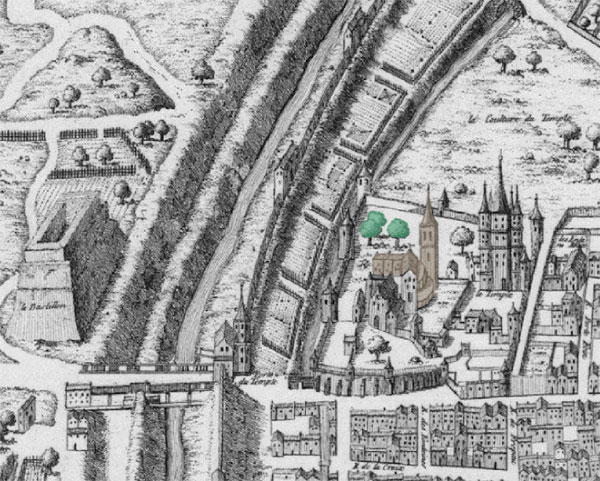
The new Carreau du Temple is an important project for the rehabilitation of a gilded hall in the north of the 3rd arrondissement, close to Place de la République, on the site of what was once the enclosure of the Templars. This project required preventive excavation work.
The site of the Carreau du Temple is characterized by a very dense stratigraphy where elements of the Middle Ages overlap those of modern times.
The enclosure of the Temple was originally, in the twelfth century, given by the King to the Templar monks in order to enable them to build their church. Thus Sainte Marie was built based on the model of the Temple of the Holy Sepulchre in Rome. The enclosure then passed into the hands of the Order of the Hospital in the 14th century, then into those of the Order of Malta.
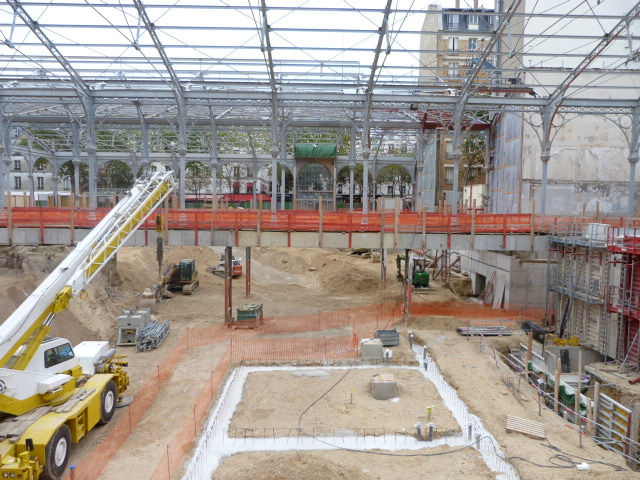
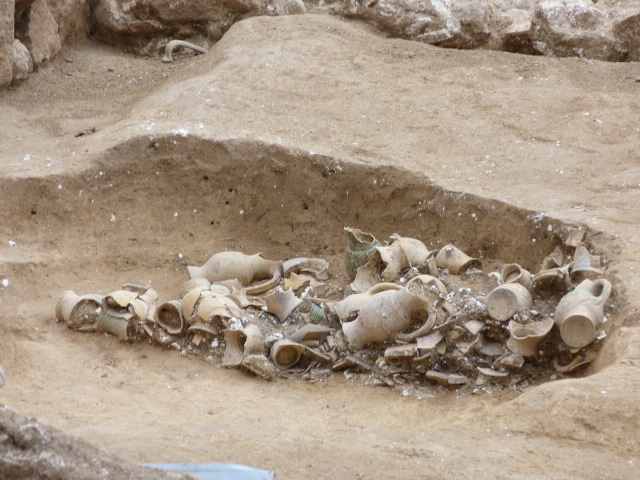
The enclosure was characterized by a tax - free system, which contributed to its development. Many buildings such as the prior's house were built.
Businesses of a more or less anarchic nature settled there for several decades. A Rotonde was built within the enclosure in the 18th century to organize these businesses.
During the revolution, this area was abandoned and demolished. It became a hall for the wood trade, then in the middle of the 19th century it became a hall for the metal trade. During the 20th century, the question arose regarding its possible uses.
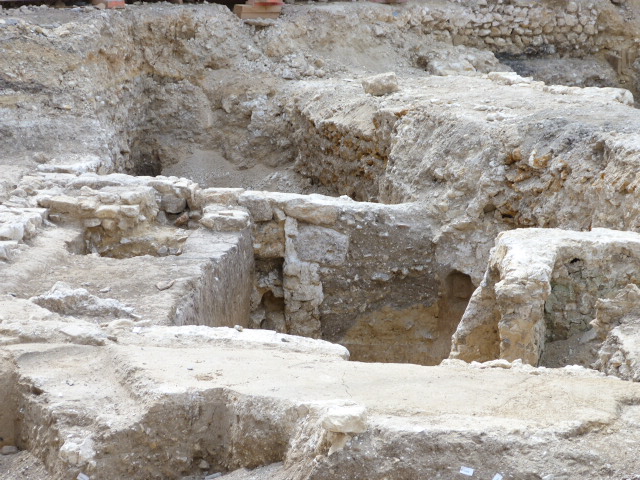
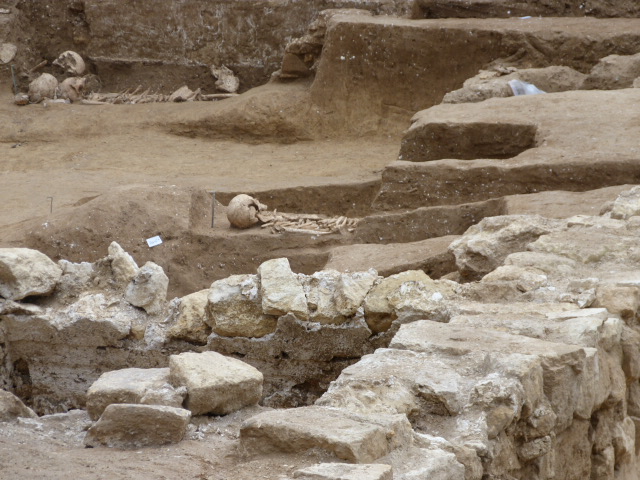
The hall was closed in 1980, and a competition was launched in the 2000’s. The project architect J.F. Milou was hired in 2007. The assignment led to the launch of an extensive program of survey excavations which revealed numerous vestiges, some dating back to the creation of the enclosure in the Middle Ages.
The oldest architectural element revealed during the excavation of was that of drainage ditches achieved by the Templar monks. Remnants of the prior's house and a 16th century cooler were also found. Bones, dating from the time of the Templars, were found at the site of an old Templar cemetery as well.
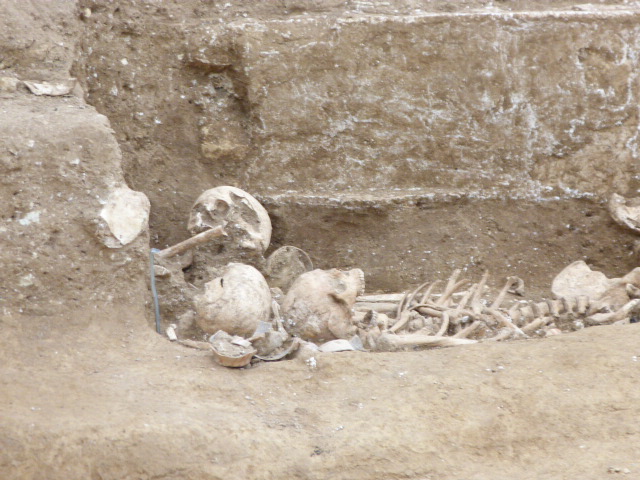
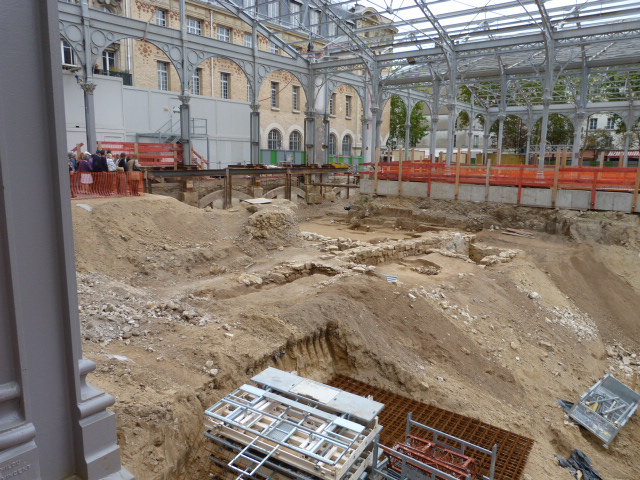
The excavations made it possible to find the embedded structures and furniture remnants when sediments were removed. The archaeologist was able to dig the site by following the stratigraphic layers.
After the on site search, the archaeologist continued laboratory research.
Physico-chemical analysis and X-rays can be performed in specialized laboratories in order to date and include materials damaged by passages in the earth.
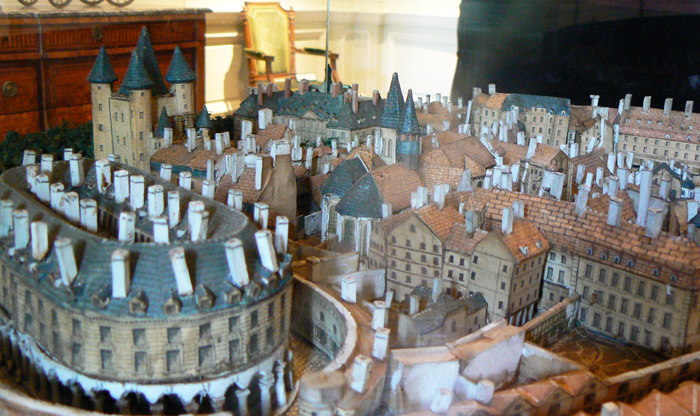
The medieval Marais was not only the site of churches, convents and monasteries, but also of splendid palaces steeped in history. These palaces were once the residences of Charles d’Anjou, King of Sicily, from circa 1265 to his death by at Foggia (Apulia, Italy) in 1285, and of his descendants, the Valois kings, from 1361 to 1559, when Henri II was killed in a tragic joust on the rue Saint-Antoine, next to the rue du Petit-Musc.
Whereas one can still see some of the medieval churches, like Saint-Gervais-Saint-Protais, or monasteries, like Saint-Martin des Champs (Saint-Martin in the Fields), there are no traces of the hôtels du Roi de Sicile, Saint-Pol and des Tournelles. There are just street names to remind one of their existence, namely the rues du Roi de Sicile, Saint-Paul and des Tournelles. It’s the history of these lost palaces, together with their occupants, which is told in this book
For example, one of the bloodiest and most thorough massacres in French history comes to mind when recalling the hôtel du Roi de Sicile. This massacre, the Sicilian Vespers, brought to an end the Angevin presence in insular Sicily called Trinacria – meaning three sides. (This tragedy was only surpassed by the massacre of St. Bartholomew in 1572). It’s from that time onwards that France became involved in Italian affairs, adding misery to that country until the Treaty of Madrid (1526) when François Ier (king Francis the First) renounced his dynastic rights in Italy, including the kingdom of Naples, and brought the Italian Renaissance (including Leonardo da Vinci) to France.
Linked to the history of the hôtel Saint-Pol was Charles VI, le Fol, (the mad king) and the Hundred Years’ War which wreaked havoc in France. Following the assassination in 1407, on rue Vieille du Temple, of his brother, Louis d’Orléans, by his cousin, the duke of Burgundy, Jean sans Peur (John the Fearless), civil war broke out between the supporters of Louis d’Orléans, theArmagnacs, and Burgundians, the backers of Jean sans Peur. The ensuing political instability in France brought the English, led by Henry V, into the conflict. Eager to reconquer the territories lost under Charles V, the victor of Agincourt (1415) had arranged a secret treaty with Jean le Bon (John the Good), duke of Burgundy, who was intent on taking revenge for the assassination of his father, Jean sans Peur, in 1419. (One year later the treaty of Troyes was signed by Charles VI, his wife Isabeau the Bavière and Jean le Bon, which recognized Henri V as the mad king’s successor – but he was not to succeed him until his death).
It was during the occupation of Paris by the English led by the regent of France, John, duke of Bedford, brother of Henry V (who died of dysentery at Vincennes in 1422, before Charles VI, the same year), that Henry’s son was crowned king of France and England at Notre Dame de Paris in 1431. (Henry VI, whose mother, Catherine de Valois, was the daughter of Charles VI, le Fol, went mad himself). That long conflict, which was caused by Charles VI’s dementia, ended after the death of the duke of Bedford in 1435, and the signing, during the same year, of the treaty of Arras, which put an end to the conflict between the Armagnacs and the Burgundians.
The hôtel Saint Pol was abandoned in 1436 after the death of Isabeau de Bavière, the wife of the mad king, Charles VI. His successor, Charles VII moved into the hôtel des Tournelles, the Parisian residence of the duke of Bedford (who created beautiful gardens), after it was made vacant following the departure of the English in 1436. The last king to reside in the hôtel des Tournelles was Henri II, whose atrocious death in 1559 led his wife, Catherine de Médicis, to abandon the cursed palace and to take up residence some time later in the newly constructed palais des Tuileries. (A horse market was set up on the gardens of the hôtel des Tournelles, which became the scene of spectacular duels).
The book also brings to light the religious confrontations between the Protestants and the Catholics which started in 1534, under the reign of François Ier, one century after the end of the civil war, in 1434. The religious wars were to last until the assassination, ordered by Henri III, of the fiercely Catholic duc de Guise in 1588. The duke aspired to replace Henri III on the French throne. A year later, in 1589, the king himself was stabbed to death, while sitting on his commode by Jacques Clément, a fanatical monk. On his death bed, the last Valois king, Henri III, named his cousin, Henri IV, as his successor. Peace in the land was not achieved, however, until Henri IV, the first Bourbon king, had abjured Protestantism in 1593 and the Édit de Nantes (Edict of Nantes) was enacted in 1598, bringing to an end the conflict between the Protestants and the Catholics until the revocation of the Edict of Nantes by Louis XIV in 1685.
The reason why the Marais was at the forefront of these bloody religious events was because it was the seat of the Ligue (Catholic League), led by the duc de Guise whose mansion was located on the site of the hôtel de Soubise, rue des Francs Bourgeois. It was in the hôtel de Guise, with the full backing of Catherine de Médicis, anxious to eliminate admiral Coligny, leader of the Protestants, who had a strong hold over her son, Charles IX, that the plan to assassinate him was concocted. The botched plot (Coligny was only wounded) was followed by his dreadful killing shortly thereafter and the persecution of some 30,000 Protestants in Paris and throughout France during the massacre of St Bartholomew in 1572.
The end of the Valois dynasty spelled the end of the Middle Ages and ushered France in a new era, the Age of Enlightenment, during which the Marais, rightly called a “quartier musée” (historic district), played an important role thanks to the presence in its midst of the aristocracy. Members of the nobility found ample and luxurious accommodations in the place Royale (place des Vosges), which was created on the site of the gardens of the hôtel des Tournelles, and in the great number of hôtels particuliers (townhouses), which had been constructed on the site of the hôtel Saint-Pol and the coutures or cultures maraîchères (marsh land devoted to intensive vegetable cultivation) which once dotted much of the Marais.
.jpg) Extract from THE KINGS IN THE MARAIS by Bruno Rémy
Extract from THE KINGS IN THE MARAIS by Bruno RémyA book not miss to discover the real story of the French Kings in the Marais.
Bruno Rémy is The specialist of medieval Paris.
He wrote several remarquable books about Le Marais.
In French :
Le Vieux Paris, la Fondation et l’Evolution du Marais Medieval
In English :
Old paris – Origin and overview of medieval Marais
Medieval Paris – Churches and Orders of mendicant monks in the Marais
Medieval Paris – Contemplative monks and Knights Templar in The Marais
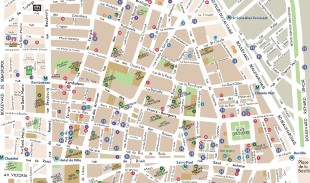


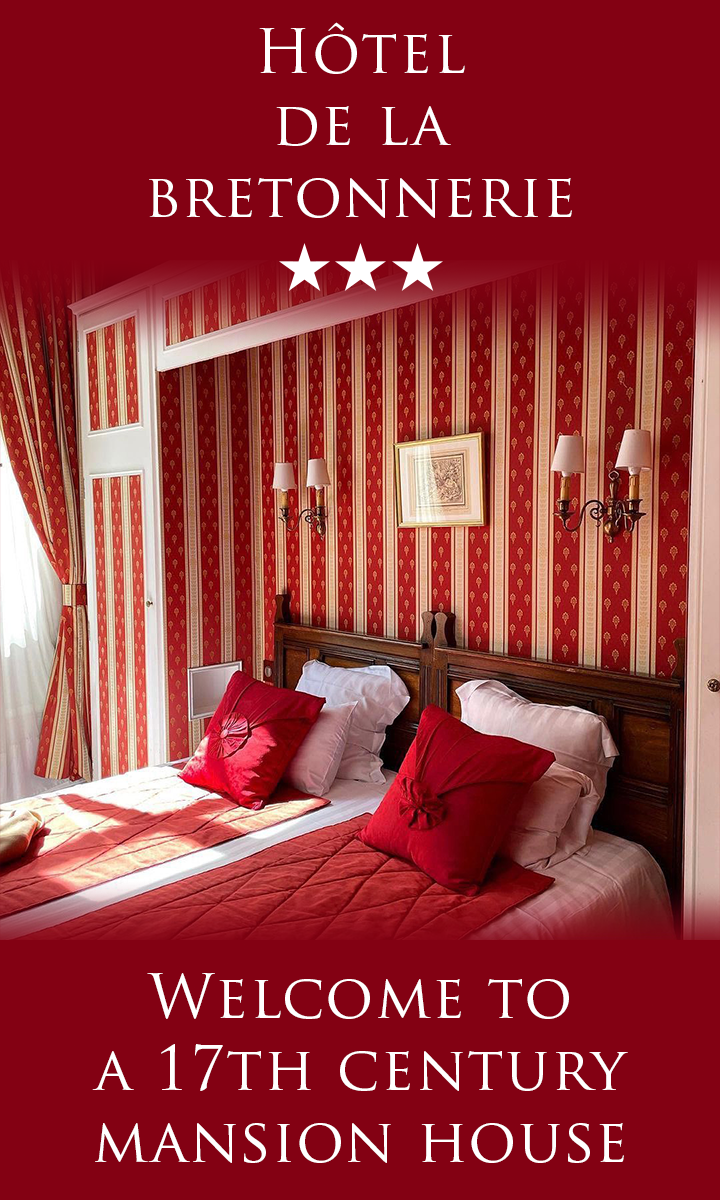
.jpg)
